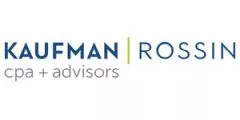Business owners today have many risks facing their companies, from increasing costs to cybersecurity threats to recruitment and retention of key employees. Proactive business owners know the best way to mitigate these and other risks is to plan ahead.
A critical area of risk often overlooked by owners of small and medium-sized businesses as well as those in closely held partnerships is what might happen if a shareholder dies, becomes disabled or needs to depart.
One of the most effective ways to mitigate this area of risk is through a properly structured and funded buy-sell agreement. These agreements are designed to help owners protect what is often their most valuable asset – their business.
Buy-sell agreements generally specify the financial terms for one shareholder to purchase the ownership interest of another shareholder. It's a good idea for a buy-sell agreement to also include a mechanism through which to fund the purchase of that interest – often life insurance.
3 steps for crafting and funding a buy-sell agreement
There are three main phases to crafting a properly structured and funded buy-sell agreement for a closely held partnership:
- Plan with the right professionals. You should work with a financial advisor and/or accountant as well as an attorney to create a buy-sell agreement. Your financial advisor or accounting professional can be a valuable sounding board, helping you understand how a buy-sell agreement would support your business goals and fit into your overall financial picture. Ultimately, an attorney will write the agreement; if you don't have a relationship with an attorney with experience writing buy-sell agreements, your financial professional should be able to connect you to one.
- Agree on a valuation approach. Part of the process of creating a buy-sell agreement is establishing a method for valuing the company and establishing a price for the shares should one shareholder wish to or need to sell. There are several different ways to approach this, including identifying a specific accounting firm to conduct the valuation or specifying that a valuation will be obtained from multiple firms, with the average used to calculate the price. Further, because business valuations change regularly, these agreements should be revisited every year or two, as well as any time the enterprise gains new shareholders
- Establish a funding mechanism for purchase. While a buy-sell agreement need not have a funding mechanism built into it, some funding is often necessary to complete a transaction. Establishing a funding mechanism as part of the agreement clarifies where the money to purchase a share will come from. It minimizes the challenges partners can face in coming up with funds for a buyout. One of the most effective ways to fund a buy-sell agreement is through life insurance and potentially disability insurance, to benefit the shareholders.
Protection for shareholders, heirs and the company itself
Funding a buy-sell agreement through an insurance policy (or policies), enables the company to continue to operate with fewer distractions and financial burdens when one shareholder dies or becomes disabled.
A common situation in which a buy-sell agreement comes into play is upon the death of a shareholder, when their stake in the company passes to a surviving spouse, children or other heir. Without a buy-sell agreement, those heirs may suddenly have a significant stake in a company that they're not interested in or not qualified to help run. With an agreement funded by an insurance policy, the remaining shareholders can purchase the heirs' stake in the business with cash from the insurance proceeds. The heirs then have cash, rather than an illiquid asset.
How insurance supports buy-sell agreements
There are a few different ways to structure insurance to support a buy-sell agreement:
- Cross-purchase plan: A cross-purchase plan is usually used with a smaller number of shareholders. In this structure, each shareholder owns a policy covering the life of the other shareholder(s).
- Entity purchase plan: An entity purchase plan can be used when there are two or more shareholders, but typically comes into play with larger groups. With an entity purchase plan, the company owns a policy on each shareholder and is the beneficiary.
- Key person insurance: Key person insurance is held by the company and covers owners or key employees. In key person insurance, the company is typically the owner and beneficiary, potentially enabling the business to fill the shoes of the key team member with minimal business interruption and financial impact.
Buy-sell agreements aren't just for partnerships. Solo owners can protect the value of their business that their heirs inherit through life insurance and an irrevocable life insurance trust (ILIT).
The insurance proceeds can be free from income or estate taxes depending on how the trust and policy are set up (consult with a tax professional on this). And, the trust can hold the business interest until an advantageous time to sell.
A properly structured, documented and funded buy-sell agreement can potentially benefit all parties involved. Kaufman Rossin's experienced financial and insurance professionals can help you understand your specific circumstances and what type of plan and funding would work best. Contact us to review your existing buy-sell agreement, or for help establishing a new one.
The content of this article is intended to provide a general guide to the subject matter. Specialist advice should be sought about your specific circumstances.


